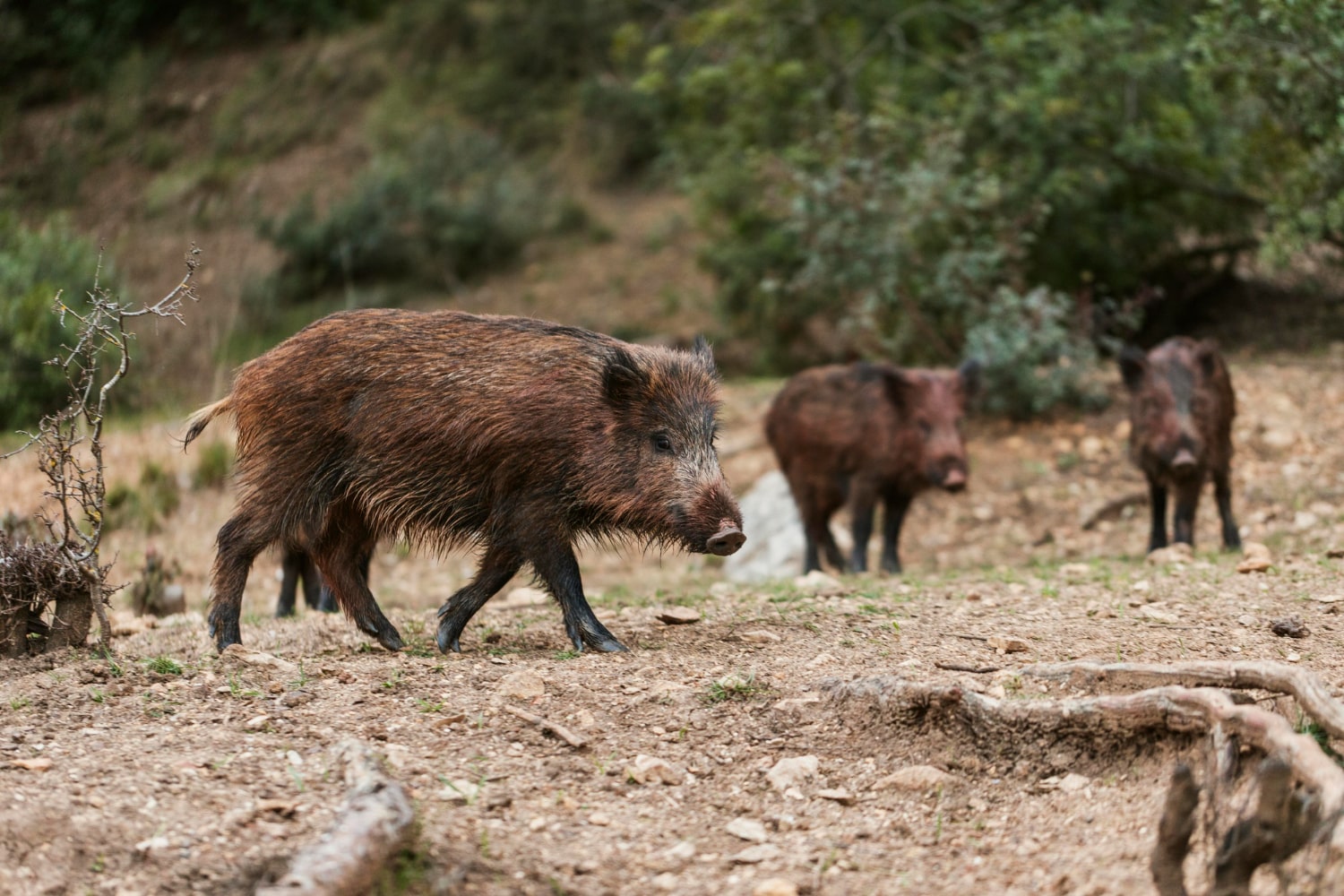Wild boars have always attracted human attention thanks to their strength, endurance, and distinctive appearance. They are the ancestors of domestic pigs, yet they have preserved their wild nature and independence, which makes them unique among mammals. These animals are widespread across different parts of the world, have adapted to various environments, and often appear in folklore and legends. Their lives are full of fascinating facts you might not know. That is why it is worth looking closer at this species and discovering incredible facts about wild boars.
- Wild boars are the ancestors of domestic pigs, but unlike their relatives, they have retained their wild instincts. They lead an active lifestyle, foraging in forests and fields. This has helped them remain resilient even in changing natural conditions.
- Wild boars are highly adaptable to different environments. They can live in mountains, swamps, forests, and even steppe regions. As a result, their range covers almost all of Eurasia, North Africa, and even parts of the Americas where they were introduced.
- An adult wild boar has impressive strength and a solid body structure. It can weigh up to three hundred kilograms, and its body length exceeds one and a half meters. Such size makes it a formidable opponent in the wild.
- Wild boars have well-developed tusks that serve multiple purposes. They are used not only for defense against predators but also for digging food from the soil. Males have larger tusks, which they employ as powerful weapons during fights.
- Wild boars are omnivores, and their diet is highly diverse. They eat roots, acorns, fruits, insects, and even small animals. This flexibility in feeding allows them to survive in different climates.
- These animals have a significant impact on ecosystems. By digging the soil in search of food, they alter its structure and help new plants germinate. However, their activity can also damage agricultural land.
- Wild boars are primarily nocturnal. They rest during the day in dense vegetation or wetlands and forage at night. This helps them avoid encounters with humans and predators.
- Female wild boars live in groups together with their offspring. These groups are called sounders and consist of several adult females and numerous piglets. Males usually live alone and join only during the mating season.
- Pregnancy in females lasts about four months. A single litter may include up to ten piglets. From birth, piglets have striped fur that helps them camouflage in grass and woodland.
- Piglets grow quickly and after just a few months are able to find food independently. Their stripes disappear by the age of six months. This marks their transition into a more mature stage of life.
- Wild boars are excellent swimmers. They can easily cross rivers and even small lakes. This ability helps them expand their habitat and escape from danger.
- These animals have an exceptionally strong sense of smell, which allows them to detect food underground. They can sense the odor of roots or mushrooms even at considerable depths. This makes them outstanding natural foragers.
- Their hearing is also very sensitive. They can detect the slightest rustle in the forest. This helps them avoid threats and navigate in the dark.
- Unlike domestic pigs, wild boars have thick bristles. This protects them from the cold and mechanical injuries. In winter, their bristles grow even denser and darker.
- Wild boars can run at speeds of up to forty kilometers per hour. They are agile and capable of moving through dense vegetation. This makes them difficult prey for both hunters and predators.
- The population of wild boars is rapidly increasing due to their fertility and omnivorous nature. In some regions, they have even become pests, causing damage to crops and ecosystems. This requires population control by humans.
- In many cultures, wild boars symbolize strength and bravery. In mythology, they were depicted as dangerous adversaries of warriors and hunters. They often became the heroes of legends and objects of reverence.
- Wild boars carry many parasites and diseases dangerous to humans and domestic animals. Contact with them requires caution. This is one of the reasons why population management rules exist in several countries.
- In winter, wild boars build nests in snow or leaves to protect themselves from frost. They rest in these shelters in groups. This helps them conserve body heat.
- In Europe, wild boars can even be found in the suburbs of large cities. They have learned to forage at landfills and fields near human settlements. Such proximity sometimes causes conflicts with people.
- In some regions of Asia, wild boars are used in religious rituals. They are considered sacred animals symbolizing fertility and the power of nature. This gives them special cultural significance.
- Wild boars play an important role in maintaining biodiversity. They spread plant seeds by eating fruits and leaving them in the soil. In this way, they help restore forest ecosystems.
- The average lifespan of a wild boar in the wild is about ten years. In captivity, they can live longer thanks to the absence of predators and stable nutrition. However, in the wild, most do not reach this age due to numerous dangers.
Wild boars are not just wild pigs but true rulers of forests and fields with many unique traits. Each of these interesting facts demonstrates their importance in natural processes and human culture. Fascinating facts show that these animals deserve respect and careful attention. Now that you may know more than before, their image becomes even more diverse and remarkable.





